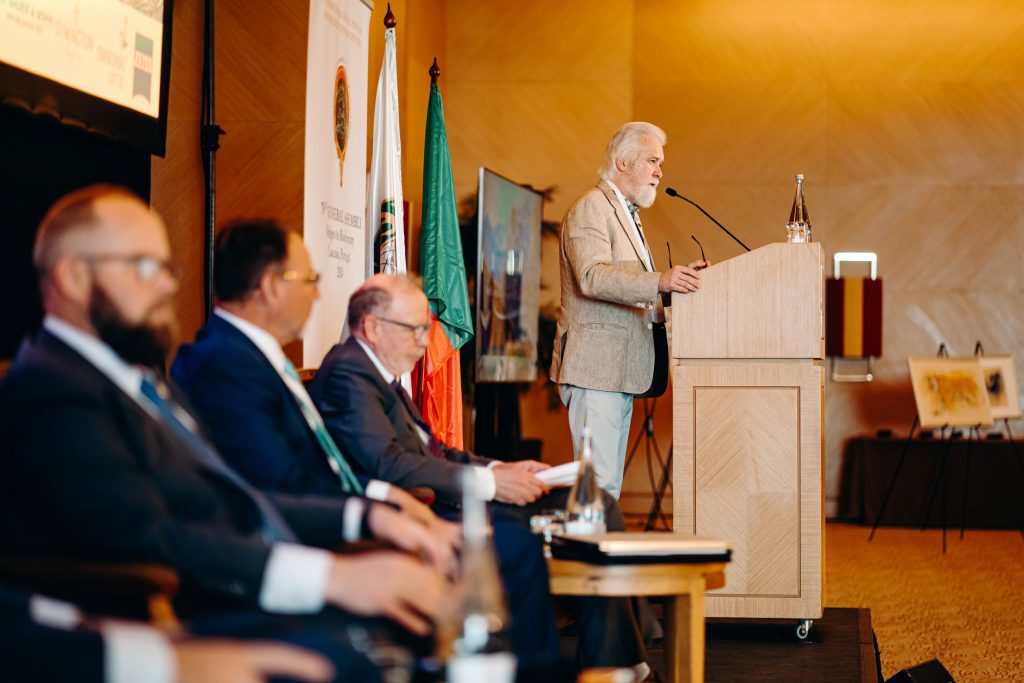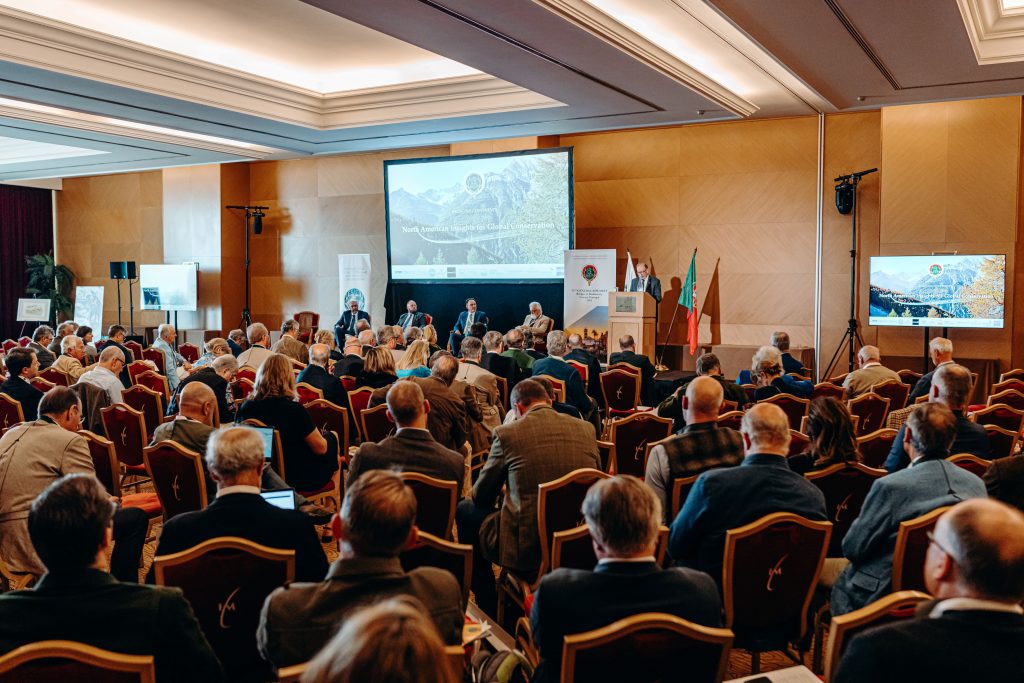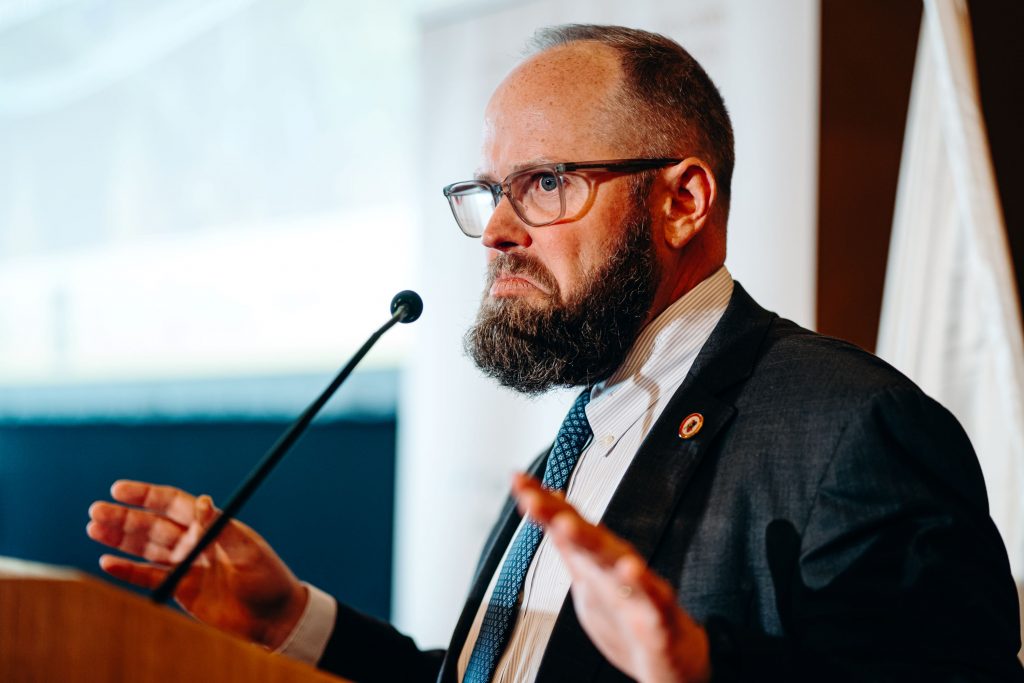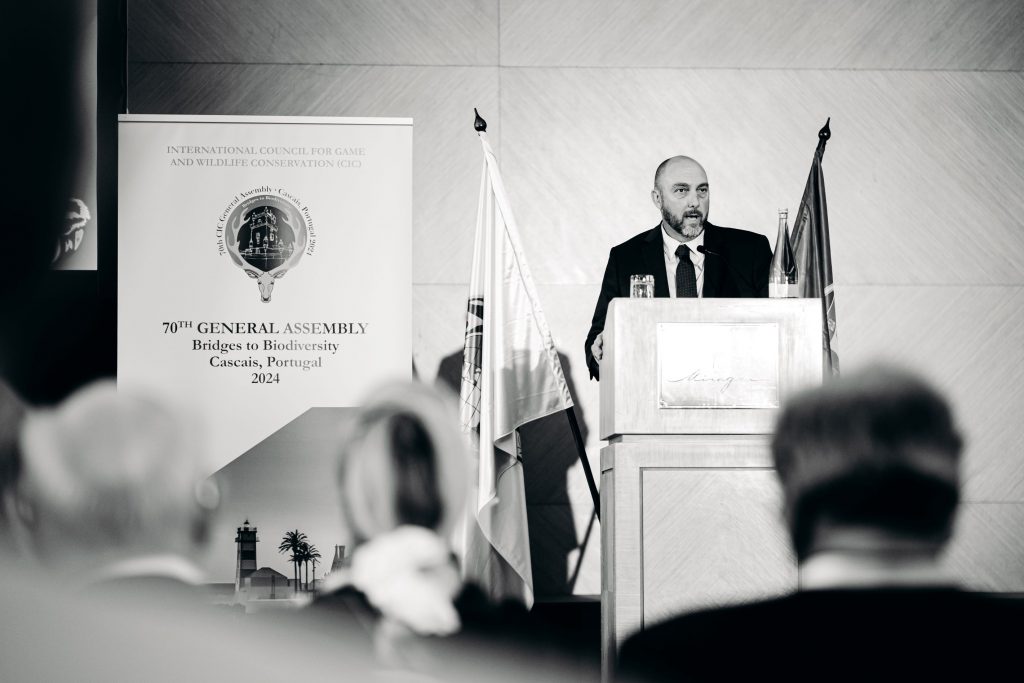The 70th General Assembly of the CIC opened on Friday 19 April 2024, in Cascais, Portugal, with some 350 delegates attending from across the globe.
Held under the theme “Bridges to Biodiversity,” the conference sought to explore the organisation’s role as a convener, uniting diverse stakeholders in support of the 2030 Global Biodiversity Framework (GBF) with the implementation of the 2030 Strategic Plan, which was adopted as part of proceedings.
With the panellists in attendance representing some of the most important wildlife institutions in the US and Canada, this session was moderated by Shane Mahoney, President of the CIC Policy and Law Division and President of Conservation Visions.

Launching into an overview of the North American Model of Conservation – its history and relevance to modern day concepts on biodiversity conservation – the introduction was a reflection on the cyclical nature of history and its relevance for conservation.
In this context, it was noted that the concept of sustainable use – which is an integral part of all major environmental intuitions today – was raised by US President Theodore Roosevelt at a CIC meeting back in 1930. The idea of protected areas was also put forward by American naturalist John Muir in the late 1800s. Reflecting on the past, therefore, was suggested as a way to find new approaches to other sustainable development issues today, such as those facing Indigenous Peoples and Local Peoples (IPLCs).
Linking into the GA theme “Bridges to Biodiversity”, it was stated that the aim for this session was to bridge North American ideas on conservation with those of other continents and indeed globally.
Ronald J. Regan, Executive Director for the Association of Fish & Wildlife Agencies, provided an overview of his Association’s history and noted it aspired to the vision of conservation as a global construct.
He noted the Association was founded in 1902 to address mutual interests, and the first meeting agenda included license fees, honey management and migratory birds.
Today the Association has headquarters in Washington DC, is non-partisan, and follows the North American Conservation Model while engaging with international treaties such as the Convention on International Trade in Endangered Species of Wild Fauna and Flora (CITES) and the Convention on Biological Diversity (CBD). Expanding on their structure and leadership, it was noted that the participation rates in the US are 5% for hunting and 15% for fishing.

Tony Wasley, President of Wildlife Management Institute (WMI), noted similarities in issues and perspectives. He said that WMI was born out of a crisis in 1911 when realization set in that wildlife in the new world was not unlimited and inexhaustible but being over-exploited with species pushed to the brink of extinction.
Wasley discussed WMI priorities, such as focusing on science and education, endorsing biodiversity and ecology, and a recognition that wildlife is part of the planet’s wealth. Drawing attention to bridging scientific gaps, the cooperative research units located in 41 of the 50 US states and established in 1935 were referenced.
Benjamin Cassidy, Director of Government Affairs at Safari Club International (SCI), described the nature, philosophy and efforts taking place at SCI. It was noted that SCI helps explain and communicate why the work of a hunter should be celebrated not stigmatised, and underscored efforts in advocacy and conservation.
It was suggested that non-hunters are currently better organised, with more money and proficiency at communications, providing examples of legal actions taken by groups pertaining to black bears in Louisiana, mule deer introductions, and trophy bans passed in the New York State senate.

Providing the perspective of NGOs in a North American context was Corey Mason, CEO of Dallas Safari Club (DSC) and DSC Foundation. Like the CIC, DSC is supported by an active and engaged membership, letting them advocate for national and international science-based conservation efforts supporting sustainable use.

Another parallel comes in the form of sources for funding for the organisations, with the DSC hosting a large annual convention attended by 50,000+ people across the four-day event. One difference with the CIC’s General Assembly lies in DSC’s broad network of international exhibitors, with 1,000 exhibitors setting up shop during the convention.
An additional major point of differentiation is the DSC’s involvement in political advocacy; with the DSC PAC – or Political Action Committee – an instrument used to render support for political candidates in the US aligned with the values of DSC.
